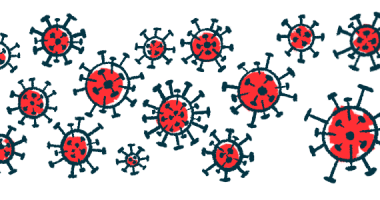Breath Biomarkers Show Potential for Identifying NTM Lung Infections

Several potential biomarkers of nontuberculosis mycobacteria (NTM)-associated lung disease were identified in the breath of people with cystic fibrosis (CF) in a recent pilot study.
The approach may offer a faster way of reaching an NTM diagnosis, which has historically relied on slow bacterial culture techniques that sometimes delay the diagnosis by months or years.
“Breath holds great potential as a source of information on an individual’s health status. This work is an early step to develop culture-independent diagnostic tools for identifying [NTM lung] disease in [people with CF],” the team wrote.
The study, “Breath biomarkers associated with nontuberculosis mycobacteria disease status in persons with cystic fibrosis: a pilot study,” was published in the Journal of Breath Research.
NTM are a group of bacteria commonly found in water and soil that can cause serious lung infections in exposed individuals. People with underlying lung diseases like CF may be particularly susceptible to these infections, in whom the infection is challenging to treat and associated with a poor prognosis.
NTM infections are usually detected with slow-growing bacterial cultures, in which sputum is collected from a patient and placed in a cell culture dish, allowing any bacteria to grow. The samples are then examined under a microscope for the presence of NTM.
A diagnosis of NTM-associated lung disease in CF patients usually relies on these cultures, in addition to monitor lung function over time. However, the slow-growing nature of the cultures and confounding factors, like the co-existence of other types of infections, can make the diagnosis in CF patients extremely challenging.
In an exhaled breath, molecules are released that could reflect a person’s health status. Previous studies have suggested that an analysis of breath biomarkers can predict tuberculosis, another type of lung infection. Now, a research team evaluated whether breath analysis may be able to also distinguish CF patients with active NTM infections.
Included in the study were 11 CF patients (seven women) who underwent bacterial cultures, lung imaging, and a clinical exam to determine whether they had NTM-associated lung disease. Patients received a mean of 29.5 bacterial cultures over more than four years before the breath test, and a mean of 21.4 cultures over more than three years after the breath test.
Ultimately, two people were determined to have never shown signs of NTM infection, six were determined to have NTM-associated lung disease, and three showed signs that NTM was present, but was growing slowly (called indolent infection).
All of the patients also had infections with at least one other typical CF-associated pathogen, including Pseudomonas aeruginosa.
In the breath collection procedure, patients were asked to breathe into a bag through a drinking straw mouthpiece. The air in the bag was pulled through a filter using vacuum into a tube that can absorb molecules from the breath sample.
From these samples, the team ultimately identified 17 biomarkers that differed between the three groups of patients. Fourteen of these were more abundant in the six people with active NTM disease compared with those with indolent infection or no infection. No differences were observed in the abundance of these biomarkers between patients who had been treated for NTM disease and those who had not.
While the exact chemical identity of the biomarkers could not be definitively confirmed in this study, several molecules had likely been previously identified in breath samples from cows, monkeys, and humans with mycobacterial infections, the researchers said.
Overall, the findings suggest that the biomarkers may be “breath signatures” of mycobacteria infections generally and may not be specific to NTM, the researchers noted.
They added that while the results suggest the breath test may be a “promising” way of identifying NTM-associated lung disease, “a study involving more patients and the use of authentic chemical standards or high resolution analytical tools to absolutely confirm biomarker identity is necessary.”








